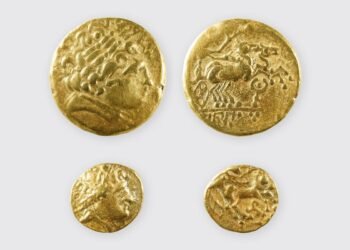Archaeologists from Archaeology South-East, affiliated with the UCL Institute of Archaeology, may have discovered some missing pieces of the city’s early history beneath the National Gallery in London’s Trafalgar Square.

The findings, part of the Jubilee Walk excavations, reveal that the urban center of Saxon London, known as Lundenwic, extended further west than previously understood.
The excavation, conducted as part of the National Gallery’s ‘NG200: Welcome’ redevelopment project, aimed to create an underground link between the Sainsbury Wing and the Wilkins Building, as well as to enhance the adjacent public realm. The area, historically significant since the reign of King Richard II, has served various functions over the centuries, from Royal Mews to residential housing.
Key discoveries include a hearth, postholes, stakeholes, pits, ditches, and leveling deposits, indicating the presence of an ancient settlement. Carbon dating of the hearth suggests occupation dating back to 659-774 CE, highlighting the early establishment of Lundenwic in this location. Additionally, post-medieval walls above the Saxon layers reveal successive phases of construction and redevelopment spanning centuries.

Previous archaeological digs in the vicinity had hinted at the existence of Anglo-Saxon activity, but the recent findings provide tangible evidence of a thriving community predating the modern-day gallery by over a millennium.
Stephen White, who spearheaded the Jubilee Walk excavations, said: “Excavating at the National Gallery was an incredible opportunity to investigate interesting archaeology and to be involved with some truly outstanding outreach.” White emphasized the importance of sharing these discoveries with the community, particularly with young people, to enrich their understanding of London’s archaeology.
Sarah Younger, Director of the NG200 Welcome Project, highlighted the honor of being part of such a significant discovery and emphasized the connection between the past and present. She underscored the National Gallery’s role in preserving and interpreting London’s rich historical heritage for future generations.
The discovery challenges previous assumptions about the extent of Saxon London’s urban center, indicating a broader reach than previously recognized.






















